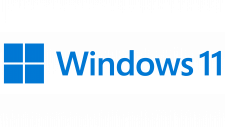Tableau Logo
Tableau is a pioneering data visualization tool, enabling users to translate intricate datasets into interactive, easy-to-understand visual graphics. As a go-to software for data analytics, it allows for the seamless integration of various data sources, offering both real-time and batch data processing. Suitable for professionals and beginners alike, Tableau provides intuitive drag-and-drop functionality, making data analysis and reporting straightforward. Owned by Salesforce since 2019, it has fortified its position in the market as a leader in business intelligence and data presentation. Its capabilities empower businesses to make data-driven decisions effectively.
Meaning and history
Tableau, a name synonymous with data visualization, commenced its journey in 2003. It was birthed out of a project at Stanford University, spearheaded by Chris Stolte, Christian Chabot, and Pat Hanrahan. Stolte’s Ph.D. thesis on visualization led to the initial foundation of what would become Tableau’s core technology.
Initially, the trio’s goal was to transform raw data into comprehensible visuals, making data analytics accessible to non-experts. Their innovative approach was met with enthusiasm, and by 2004, they introduced Tableau Desktop, a groundbreaking product allowing users to create interactive, shareable dashboards.
As the company grew, it expanded its product suite. Tableau Server was unveiled in 2007, facilitating centralized data sharing in organizations. In 2010, Tableau Public was launched, allowing users to publish and share data visualizations publicly online, further democratizing data analytics.
Tableau’s exponential growth led to its IPO in 2013, which was a resounding success. Its stock price more than doubled on its first day of trading, reflecting the industry’s faith in its revolutionary approach to data visualization.
However, the most significant turning point came in 2019. Tech giant Salesforce acquired Tableau for a staggering $15.7 billion in an all-stock deal. This acquisition was a strategic move by Salesforce to expand its business intelligence capabilities and integrate powerful data visualization tools into its platform. Under Salesforce’s umbrella, Tableau continued to thrive, benefiting from Salesforce’s vast resources and market reach.
The journey of Tableau, from a Stanford research project to an industry-leading software under Salesforce, is a testament to its commitment to making data analytics user-friendly. Over the years, while its ownership has shifted, its mission to empower businesses and individuals with intuitive data tools remains unwavering.
The visual emblem seamlessly blends graphics and text, unified by distinct design elements. Crafted using digital techniques, the textual representation adopts a numeric style, wherein alphabets appear numeral-like. Opting for a minimalistic font, the designers chose lowercase letters, streamlined the character anatomy, and established a cohesive aesthetic across the inscription. Consequently, each character mirrors a counterpart: the lowercase “l” emulates the pipe symbol (|), and “t” resonates with the plus sign (+). Generous spacing between letters fosters a unified, formulaic perception.
Adjacent to the text, on its left, lies a vibrant graphical element. This features a multitude of colorful plus signs (+), artistically representing the “t” from “Tableau.” While these symbols seem randomly dispersed, they follow a systematic pattern, symbolizing a digital cloud—an innovative data storage solution pioneered by the company. The icons collectively form a circular arrangement, contained within its boundary. Serving as the backdrop for both the textual and graphical elements is a pristine white hue, offering neutrality and balance.











